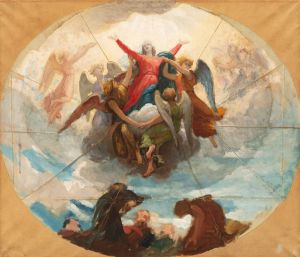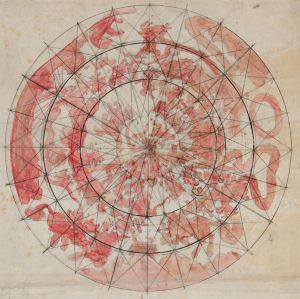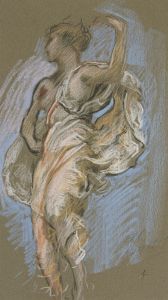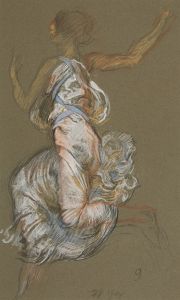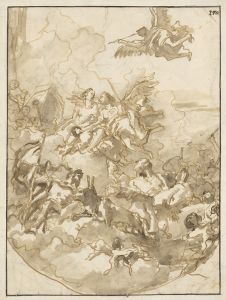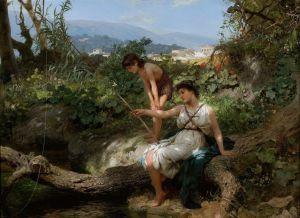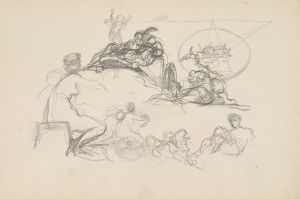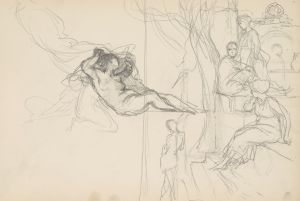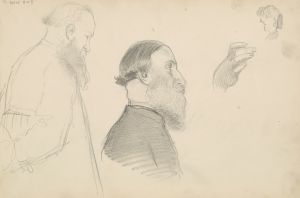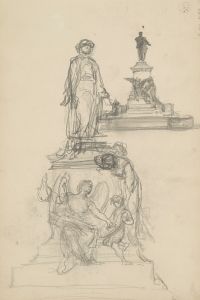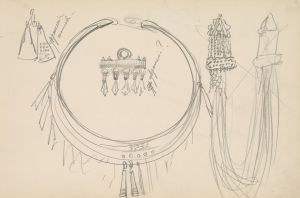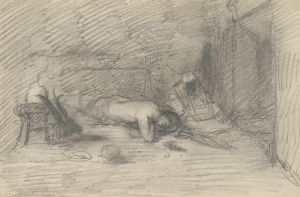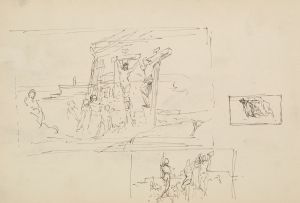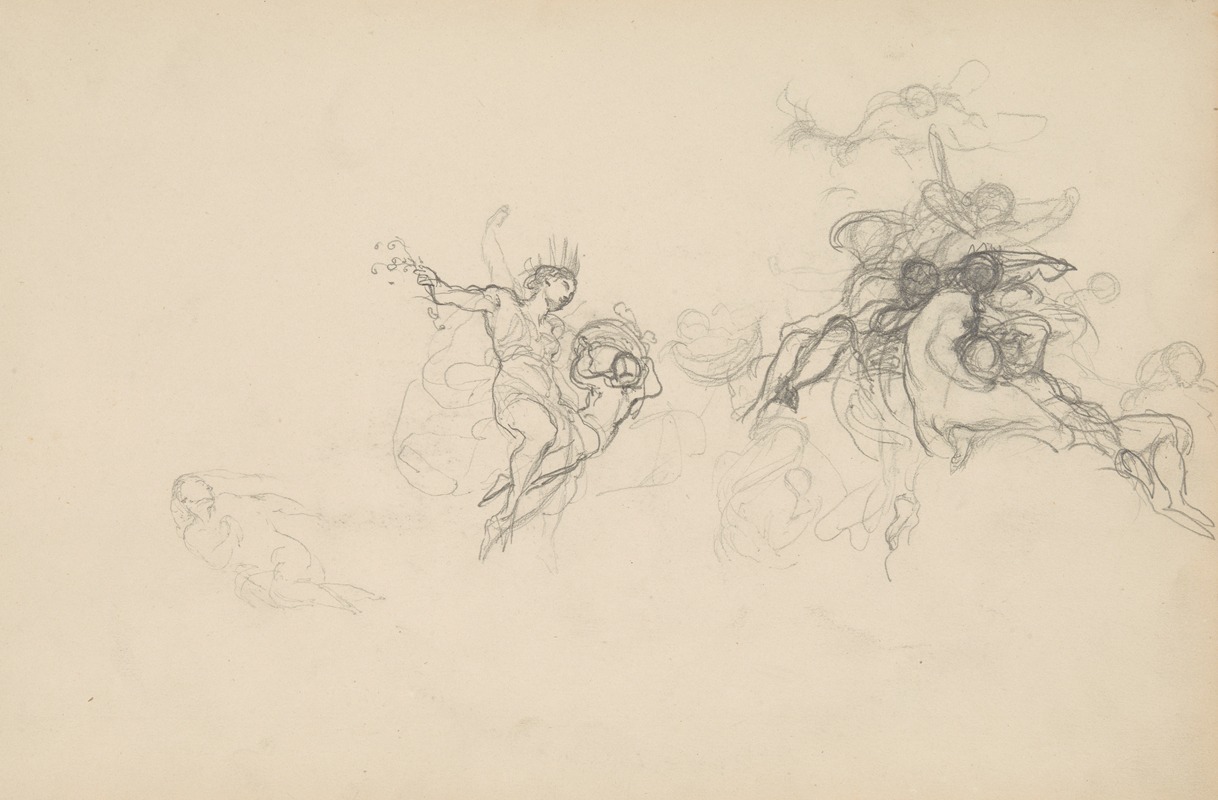
szkice postaci do plafonów ‘Jutrzenka’ i ‘Wiosna’ do pałacu J. Neczajewa-Malcewa w Petersburgu
A hand-painted replica of Henryk Siemiradzki’s masterpiece szkice postaci do plafonów ‘Jutrzenka’ i ‘Wiosna’ do pałacu J. Neczajewa-Malcewa w Petersburgu, meticulously crafted by professional artists to capture the true essence of the original. Each piece is created with museum-quality canvas and rare mineral pigments, carefully painted by experienced artists with delicate brushstrokes and rich, layered colors to perfectly recreate the texture of the original artwork. Unlike machine-printed reproductions, this hand-painted version brings the painting to life, infused with the artist’s emotions and skill in every stroke. Whether for personal collection or home decoration, it instantly elevates the artistic atmosphere of any space.
Henryk Siemiradzki, a renowned Polish painter of the 19th century, created preparatory sketches for the ceiling paintings titled Jutrzenka (Aurora) and Wiosna (Spring) for the palace of J. Neczajew-Maltsev in Saint Petersburg, Russia. These works were part of a larger decorative project commissioned for the interior of the palace, reflecting the artist's mastery in academic art and his ability to integrate mythological and allegorical themes into architectural spaces.
Siemiradzki was celebrated for his large-scale historical and mythological compositions, often inspired by classical antiquity. The sketches for Jutrzenka and Wiosna demonstrate his skill in rendering the human figure with elegance and precision, as well as his talent for creating harmonious compositions suited for ceiling decorations. These preparatory works were likely intended to guide the final execution of the plafonds (ceiling paintings), ensuring that the designs aligned with the overall aesthetic vision of the palace's interior.
The themes of Jutrzenka and Wiosna align with Siemiradzki's interest in allegory and nature. Jutrzenka represents the dawn, often personified as a goddess or a symbol of renewal and light, while Wiosna embodies spring, a season associated with rebirth and vitality. Such themes were popular in 19th-century European art, particularly in decorative projects for aristocratic residences, as they conveyed timeless ideals and complemented the luxurious settings.
The palace of J. Neczajew-Maltsev, for which these sketches were created, was a significant architectural and cultural landmark in Saint Petersburg. It served as a testament to the wealth and taste of its owner, as well as a showcase for the work of prominent artists like Siemiradzki. While the final execution of the ceiling paintings is not as widely documented as some of Siemiradzki's other works, the surviving sketches provide valuable insight into his creative process and his contributions to decorative art.
Today, these sketches are appreciated as examples of Siemiradzki's preparatory work and his ability to adapt his artistic vision to different formats and contexts. They remain an important part of his legacy, reflecting his role in the artistic and cultural exchanges of his time.





